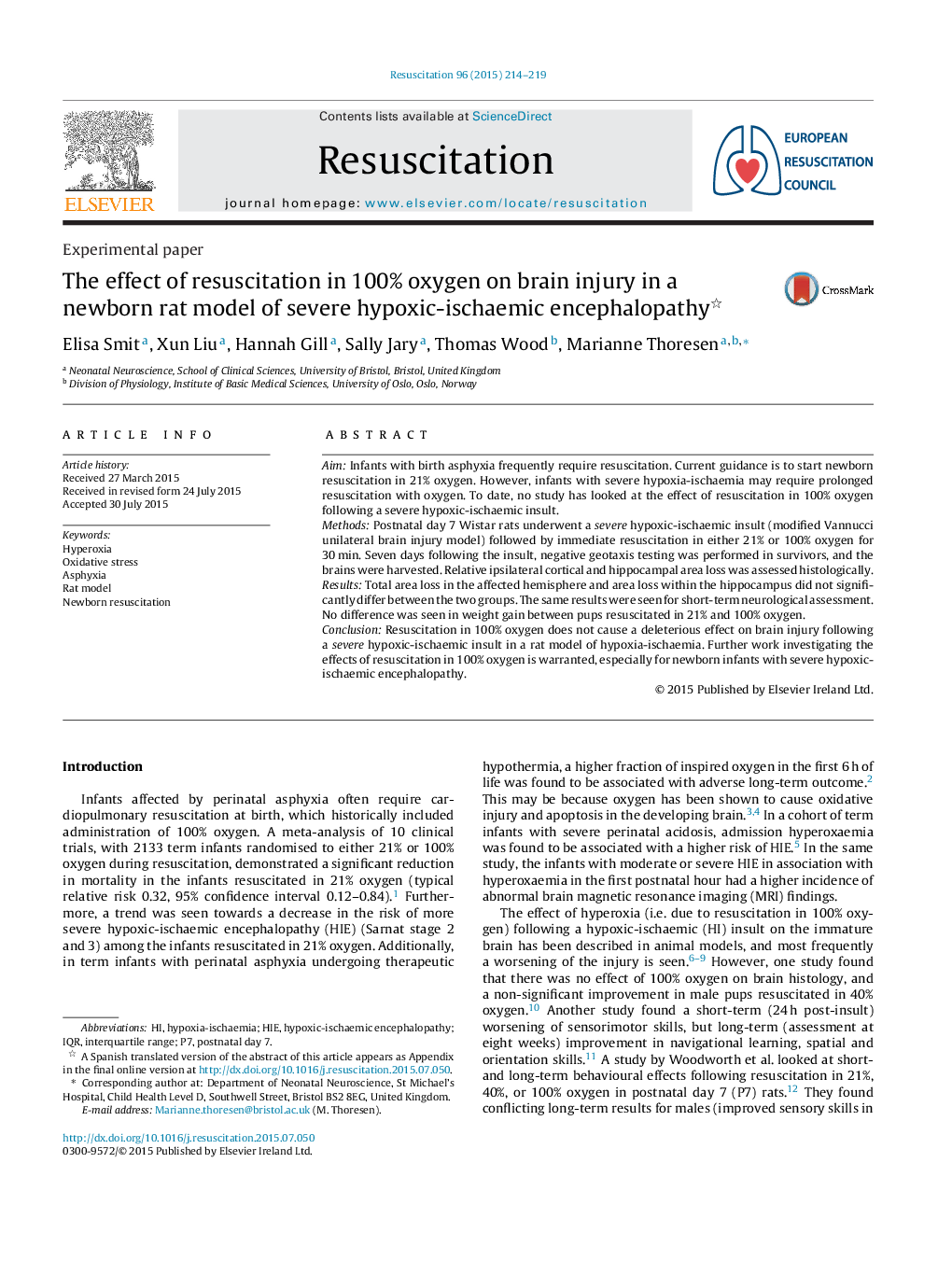| Article ID | Journal | Published Year | Pages | File Type |
|---|---|---|---|---|
| 5997562 | Resuscitation | 2015 | 6 Pages |
AimInfants with birth asphyxia frequently require resuscitation. Current guidance is to start newborn resuscitation in 21% oxygen. However, infants with severe hypoxia-ischaemia may require prolonged resuscitation with oxygen. To date, no study has looked at the effect of resuscitation in 100% oxygen following a severe hypoxic-ischaemic insult.MethodsPostnatal day 7 Wistar rats underwent a severe hypoxic-ischaemic insult (modified Vannucci unilateral brain injury model) followed by immediate resuscitation in either 21% or 100% oxygen for 30Â min. Seven days following the insult, negative geotaxis testing was performed in survivors, and the brains were harvested. Relative ipsilateral cortical and hippocampal area loss was assessed histologically.ResultsTotal area loss in the affected hemisphere and area loss within the hippocampus did not significantly differ between the two groups. The same results were seen for short-term neurological assessment. No difference was seen in weight gain between pups resuscitated in 21% and 100% oxygen.ConclusionResuscitation in 100% oxygen does not cause a deleterious effect on brain injury following a severe hypoxic-ischaemic insult in a rat model of hypoxia-ischaemia. Further work investigating the effects of resuscitation in 100% oxygen is warranted, especially for newborn infants with severe hypoxic-ischaemic encephalopathy.
